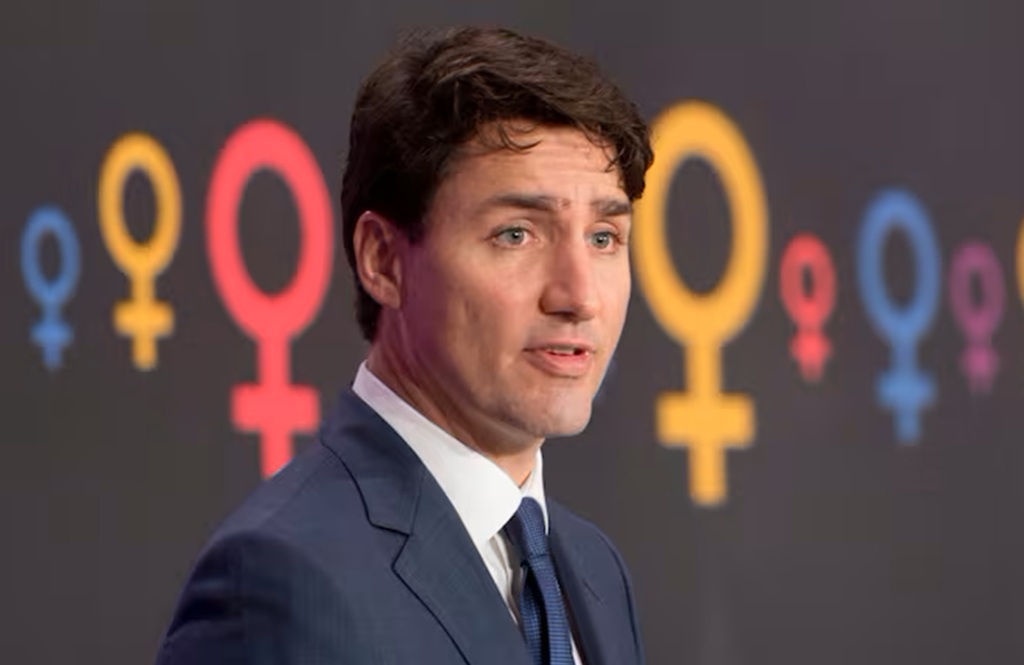Politics
Justin Trudeau’s Fight for Gender Equity in Canada

Justin Trudeau made news in 2015 by introducing Canada’s first gender-balanced cabinet, a decision that established the tone for the government’s commitment to gender equity and representation.
Since his election in 2015, Prime Minister Justin Trudeau’s government has prioritized gender parity. From cabinet makeup to legislative efforts, the government has taken significant steps to reduce disparities and promote inclusion in Canada.
By assuring equal representation in top positions, the Trudeau government sends a strong message: varied perspectives improve governance.
While symbolic steps such as a balanced cabinet are vital, some believe that more than representation alone needs to address underlying issues. The Trudeau government has supported representation through measures to overcome these hurdles, leading us to the following issue.
Gender Equity in Pay
In 2021, Canada passed the Pay Equity Act, which requires federal workplaces to provide equal pay for equal work. This was a significant step towards narrowing the salary disparity between men and women.
The rule applies to firms with ten or more employees in federally regulated industries, promoting openness and fair compensation.
The government also developed the National Strategy to Prevent and Address Gender-Based Violence, prioritizing prevention, social services, and judicial reforms. Shelters, crisis centres, and advocacy groups have received extra funding to ensure survivors can access support.
Affordable childcare is crucial for allowing women to participate in the workforce. The Liberal government implemented a $10-per-day childcare program to alleviate the financial burden on families. This approach benefits parents, particularly mothers, who bear the burden of caring tasks.
One of the Trudeau administration’s most prominent innovations is using a “gender-based analysis plus” (GBA+) methodology for federal budgeting. This guarantees that government spending decisions consider the effects on different genders and other intersecting characteristics such as race, handicap, and income level.
Sexual and reproductive health projects
For example, the 2024 Autumn Economic Statement included continuous spending to protect women’s reproductive health and eliminate disparities in healthcare access. This approach prioritizes equity in resource allocation, recognizing that blanket policies frequently fail to adequately serve marginalized people.
In September 2024, Trudeau announced over $200 million in funding for worldwide sexual and reproductive health projects. These initiatives prioritize education, contraceptive access, and maternity healthcare.
Domestically, the government has boosted funding for abortion services, especially in impoverished areas. These initiatives demonstrate a commitment to empowering women and giving them authority over their healthcare decisions.
Despite these attempts, women in Canada continue to encounter challenges in the workplace. The gender pay gap is severe, particularly among racialized and Indigenous women. Critics believe that while regulations like the Pay Equity Act are a fine place to start, enforcement and oversight must improve.
Some campaigners have argued that the government’s approach to gender equity fails to address the unique issues that non-binary people confront, as well as those who face numerous types of discrimination. For example, racialized women and women with disabilities frequently suffer compounded injustices that broad measures can not fully address.
Advocating for Gender Equity
Efforts to promote gender equality have also encountered opposition. Some accuse the administration of focusing too much on identity politics, claiming that these programs take attention away from more serious issues.
However, supporters argue that equity is essential for a successful society and economy.
The Trudeau government continues to advocate for gender equality on several fronts. There is reason to be optimistic about future policy reforms and increased investments in healthcare and education.
Simultaneously, persistent advocacy will be required to guarantee that progress accomplished thus far does not stall.
Gender fairness isn’t just a moral obligation; it’s also a sound policy. The Trudeau government has worked to make Canada more equitable and inclusive by removing barriers and providing new possibilities.
While problems persist, the foundation has been created for future improvement. The challenge is how to capitalize on this momentum to achieve long-term change. Gender equity is a never-ending goal through policy, representation, or public dialogue.
It’s a difficult but important trip, and everyone’s opinion counts.





































